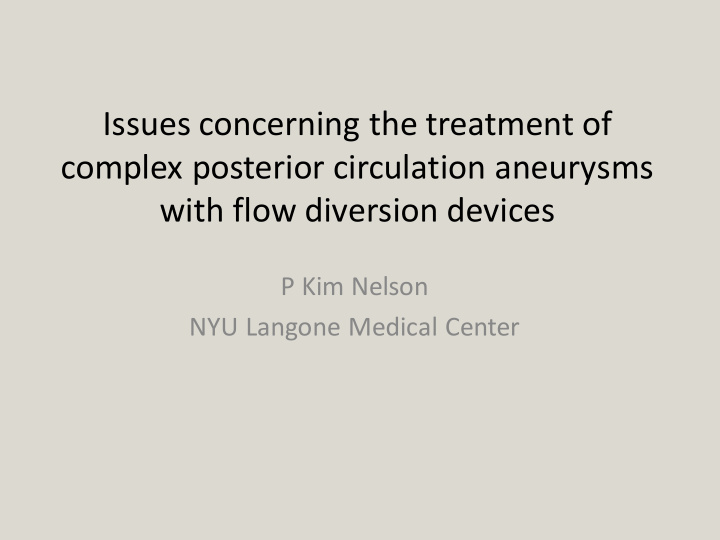



Issues concerning the treatment of complex posterior circulation aneurysms with flow diversion devices P Kim Nelson NYU Langone Medical Center
11/13/2008 3/4/2008
17 year old male
Pre-treatment angiogram Patient had remotely undergone occlusion of the right vertebral artery
6 month follow-up angiogram
Heterogeneity of aneurysms and patients
Posterior circulation
58 year old male with cranial neuropathies and quadraparesis
8/31/09 10/5/09
76 year old woman with paraparesis and diplopia
Pre-treatment angiogram Sequential images of construct fabrication
Immediate post-PED angio demonstrating delayed aneurysm washout
24 hour post-treatment angio demonstrating interval progressive thrombosis of the aneurysm. Minor residual opacification of the proximal aneurysm at the left AICA outflow
Massive IV/SAH 2 weeks post-treatment
37 year old woman with swallowing disorder, right 6 th and 7 th N palsies, and trismus
61 year old male (locked in syndrome)
Treatment angiogram
Follow-up angiogram
60 year old male with multiple cranial neuopathies and quadraparesis
Fusiform Basilar Artery Aneurysm • 25 year old right handed gentleman presenting with acute onset of diplopia • Neurologic exam: significant for right sixth nerve palsy.
MRI
Floating stent as endoluminal baffle
Post-PED embolization LVA angiogram
Post-PED embolization LVA angiogram
Post-PED RVA 3 day follow-up angiogram
Follow-up imaging 5 weeks post-treatment – Patient with worsening headaches
MRI 7 months post-PED: Symptoms resolved
Post-PED 12 month follow-up angiogram
Post-PED 12 month follow-up RVA angiogram
Post-treatment* survival among patients with fusiform basilar aneurysms * Surviving patients 1 12 Time (months)
Recommend
More recommend